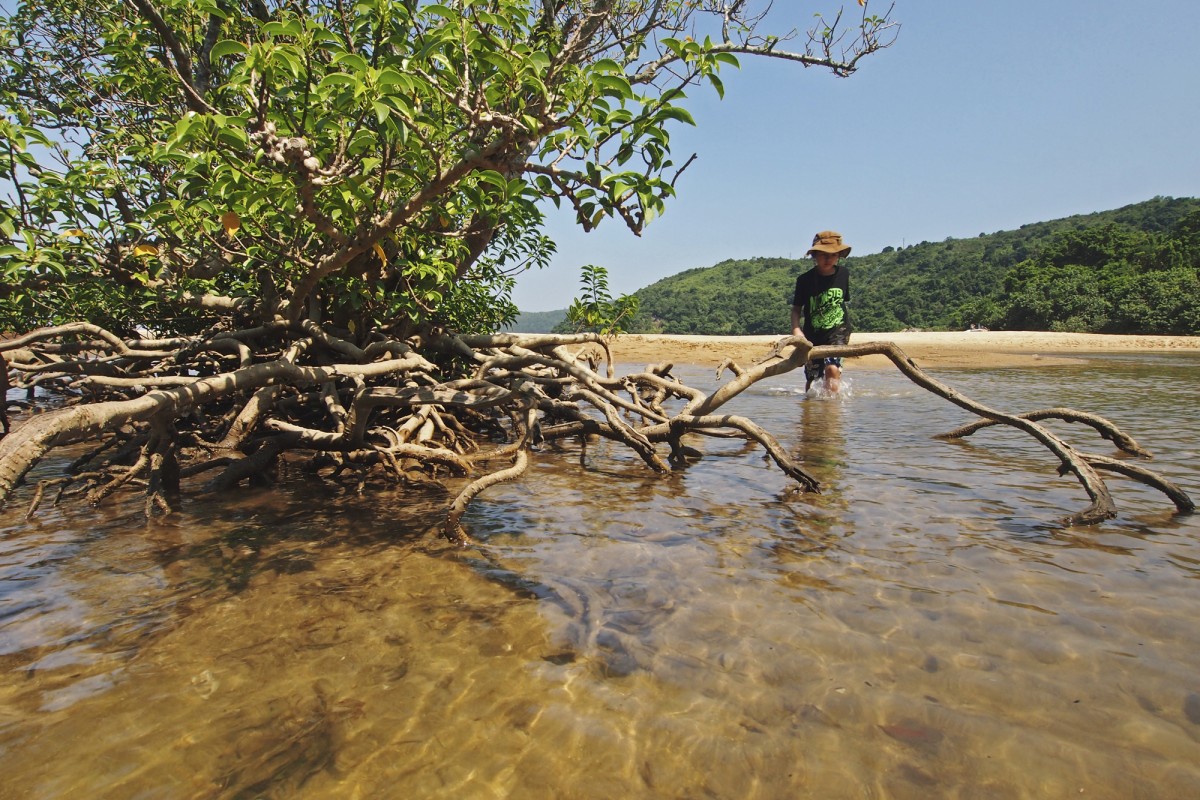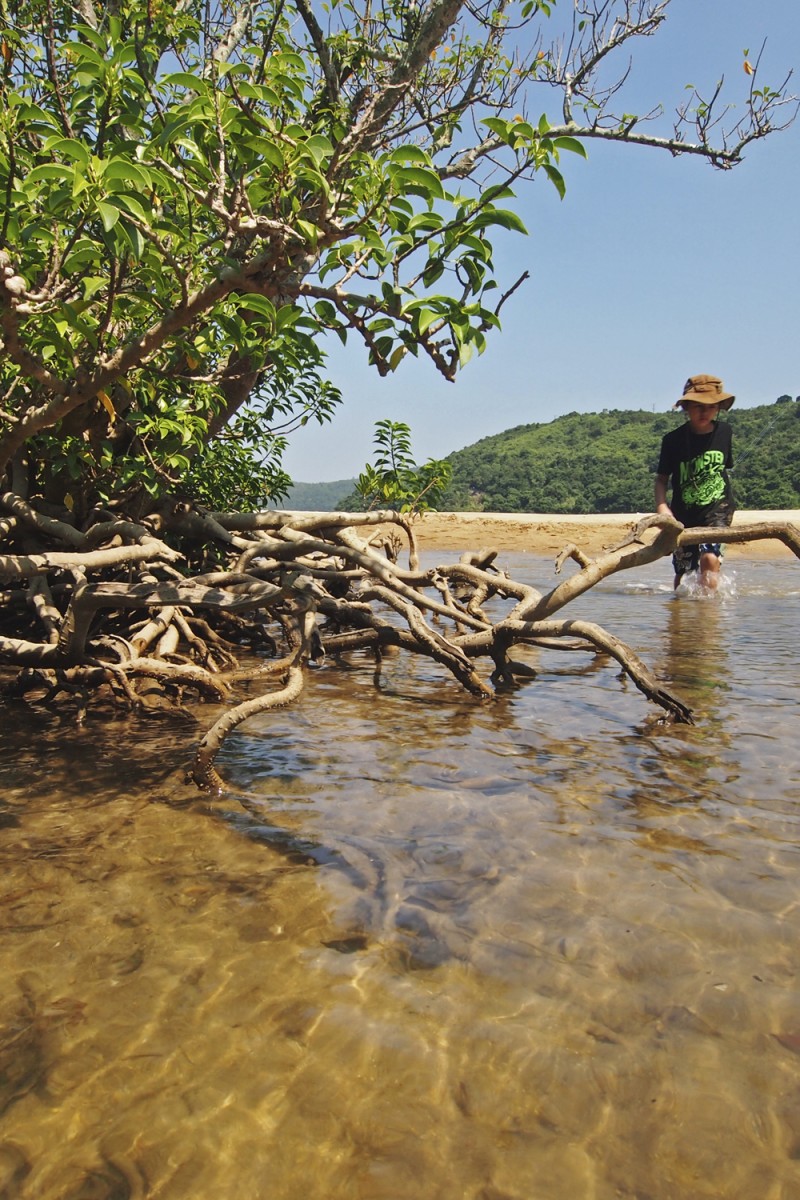 A boy wades through the water in the Hoi Ha mangroves in Sai Kung.
A boy wades through the water in the Hoi Ha mangroves in Sai Kung.Snorkel masks, kayaks and swimsuits aren't necessary for holidaymakers to appreciate the natural riches of Sai Kung's Hoi Ha Wan Marine Park.
Standing knee-deep in the crystal-clear waters of the mangrove-fringed bay, one can marvel at iridescent fish wiggling towards their coral homes further offshore while passing starfish and dodging spiky urchins.
But a plan to build dozens of houses in the nearby village of Hoi Ha could destroy the protected reefs and drive away the creatures that inhabit and visit them.
Environmental crusader David Newbery and filmmaker Martin Williams, are determined to stop that from happening. They've produced a nine-minute documentary to draw attention to the controversies surrounding the proposed development.
Titled Save Hoi Ha and Pak Sha O - the latter a reference to Hoi Ha's neighbouring Hakka village - Williams hopes that the online video will show people the priceless nature of a marine park, and help pressure the government to scrap the project.
The scheme is a "recipe for environmental disaster", says Newbery, who has lived in the village for 18 years, and founded the green group Friends of Hoi Ha. He also believes that the government's planning process was "inadequate, misleading and deliberately falsified".
Last October, more than 200 nature lovers marched 5km to the coastal village to call for the housing proposal to be abandoned. Over the past six months, about 1,500 have also signed an online petition. But their plea has thus far fallen on deaf ears.
One of the biggest issues, as explained in the documentary, is that building more houses would bring serious water pollution to the protected cove.
Under the law, no sewage discharge is allowed within 100 metres of the marine park's boundary and within 30 metres of streams. But more than three-quarters of the new houses will be built in the restricted area.
Worse still, houses built by indigenous villagers are exempted from many government regulations. For example, they are not required to install sewage systems, only septic tanks that lightly treat sewage before it is discharged into the protected waters. The amount of poorly-treated sewage discharged by each house isn't a huge problem. But when you add the amount of pollutants produced by all the houses together, it can cause serious damage to the environment.
"There's a loophole in the Environmental Impact Assessment Ordinance [which only regulates projects] that cover areas larger than three hectares," says Newbery. "[The government is] just leaving [the marine park] to chance. By the time we realise anything is wrong, it's going to be too late."
Another of the anti-development camp's key arguments is that the plan is based on shaky grounds. Newbery says the application submitted by indigenous male villagers to allow the younger generation to build extra houses on what they consider ancestral lands comes from "desire, not need".
According to Newbery, only seven houses have been erected in the area since he started living there and none was occupied by indigenous villagers. He added that most of the land is thought to have been sold to property developers.
Newbery isn't against development; he just wants the proposals to meet real needs and green standards. Both Newbery and Williams worry if things do not change, the memories of Hoi Ha Wan will be relegated to mere photographs. "I want the marine park to become an example of sustainable development, instead of a monument showing how the government has failed," says Newbery.
Stay tuned to Friends of Hoi Ha for new clips
